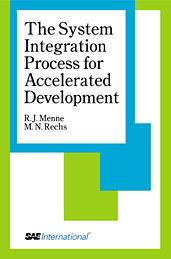Journal Article
Optimization of Electrified Powertrains for City Cars
2012-06-01
2011-01-2451
Sustainable and energy-efficient consumption is a main concern in contemporary society. Driven by more stringent international requirements, automobile manufacturers have shifted the focus of development into new technologies such as Hybrid Electric Vehicles (HEVs). These powertrains offer significant improvements in the efficiency of the propulsion system compared to conventional vehicles, but they also lead to higher complexities in the design process and in the control strategy. In order to obtain an optimum powertrain configuration, each component has to be laid out considering the best powertrain efficiency. With such a perspective, a simulation study was performed for the purpose of minimizing well-to-wheel CO2 emissions of a city car through electrification. Three different innovative systems, a Series Hybrid Electric Vehicle (SHEV), a Mixed Hybrid Electric Vehicle (MHEV) and a Battery Electric Vehicle (BEV) were compared to a conventional one.

